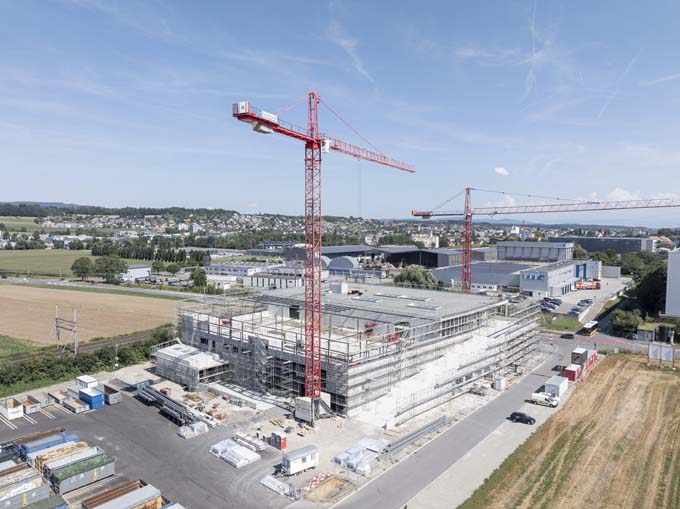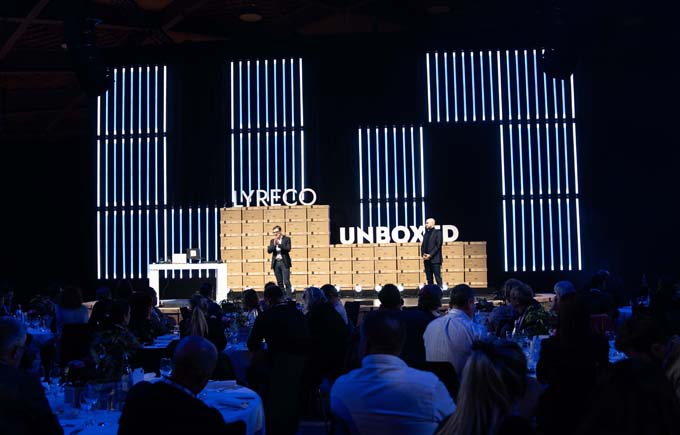Renewal of building stock: combining building materials sensibly
Four building associations have compiled a study that for the first time shows the use of different building materials in Switzerland. Political discussions that pit individual building materials against each other are not expedient. Instead, technological progress, recycled materials and the renovation of buildings as well as the construction of replacement buildings would bring about a breakthrough in achieving the climate targets.

Switzerland's building stock is outdated and thus responsible for almost half of the country's energy demand and a quarter of its CO2 emissions. Around 1.5 million buildings are considered in need of renovation due to their poor energy efficiency, as the Swiss Association of Master Builders (SBV), the Swiss Brick and Tile Industry, the Swiss Gravel and Concrete Industry Association (FSKB) and the Swiss Steel and Building Technology Trade Association (SSHV) write. In order to achieve the climate targets and net zero CO2 emissions in 2050, the rate of renovation would have to be tripled. This can be achieved, among other things, by promoting the renovation of existing buildings or by not hindering the construction of replacement buildings.
Solid building material with robust market share
As an important basis for this work, the four construction industry associations mentioned above have published a study for the first time (cf. SBV_Studie_Materialvolumen_2021_210x297mm_DE-web). It shows the volumes used and their development over time in a direct comparison. According to the data, traditional building materials such as bricks, cement, concrete and steel have a market share of around 95%. This value has remained extremely stable over the past decade. Wood has been able to expand its share over the last ten years from 4.4% to now 5.3%.
These market developments will be very gradual, according to the construction associations. Therefore, it is likely that the material mix will look more or less the same even in the middle of the century. Sustainable construction is therefore not helped by playing off one building material against the other through political activities. Instead, the key is to combine the respective advantages of the building materials, emphasizes the master builders' association.
Combine building materials sensibly
Wood - especially that from the local forest - has great advantages as a renewable raw material and is already being combined with bricks, concrete and steel. Temperatures are expected to rise in the coming years, so cooling is becoming increasingly important. Cooling buildings in summer could soon require more energy than heating them in winter. Solid building materials such as brick and concrete would have ideal energy properties for summer heat protection, which means that buildings would not heat up as much as with other materials and correspondingly less energy would be needed for cooling.
The materials of the solid construction would be produced domestically to a very high degree. This saves long transport routes and thus CO2 emissions. A great deal of research is being carried out to further develop the building material. For example, a cement is currently being developed at the Swiss Federal Institute of Technology in Lausanne (EPFL) that can be produced with significantly less energy thanks to a lower clinker content. One of many examples of how important technical progress is for sustainable building, according to the building associations.
High recycling rate
According to the association, innovative technologies allow a significant increase in the percentage of recycled material. Already 16% of the material needed for construction is covered by recycled construction waste. A few years ago, the figure was only 13%. Of the construction waste generated, 70% is recycled. The recycling rate is already high, and the remaining potential can be tapped through the use of new technologies such as robot-controlled sorting systems.
The construction associations also point out that the modernization offensive also includes careful use of the increasingly scarce resource of soil. The efforts to recycle construction waste are an important piece of the puzzle in this sense. In order to protect the soil, the implementation of complete renovations and the realization of replacement buildings are further central instruments.
Solid construction for social and environmental sustainability
New replacement buildings are not a zero-sum game. Modern buildings are four to seven times more energy-efficient than old properties built before 1980. The bottom line is that thanks to new replacement buildings, significantly more new homes are created than old ones are lost. Based on the Swiss Federal Statistical Office, the association writes that around 60,000 new apartments are created every year, while 5,000 residential units are demolished (data from 2018).
New replacement buildings meet the new demands of the population, which wants more living space per person and more single households. In order to be able to realize feasible and affordable building projects that are also in demand from customers, all building materials would have to be used in an ideally coordinated manner. In particular, brick, cement, concrete and steel will play a central role in the future in order to modernize the building stock not only sustainably but also cost-efficiently, according to a final statement from the building association kitchen.
Source: SBV, FSKB, SSHV, Brick and Tile Industry Switzerland
Other construction topics:
- Building according to the cycle
- "Baustoff-City" promotes the circular economy in eastern Switzerland
- Those who build and renovate plan for natural hazards









